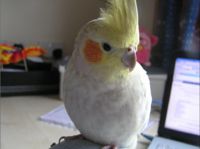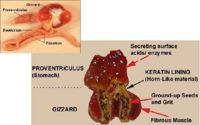Difference between revisions of "Avian Digestive Tract Overview - Anatomy & Physiology"
Ggaitskell (talk | contribs) |
Ggaitskell (talk | contribs) |
||
| Line 12: | Line 12: | ||
{{Template:Learning | {{Template:Learning | ||
| − | |OVAM = [http://www.onlineveterinaryanatomy.net/content/interactive-avian-anatomy-digestive-system-2 Interactive Avian Digestive System Anatomy 1]<br>[http://www.onlineveterinaryanatomy.net/content/interactive-avian-anatomy-digestive-system-1 Interactive Avian Digestive System Anatomy 2]<br>[http://www.onlineveterinaryanatomy.net/content/interactive-avian-anatomy-digestive-system-0 Interactive Avian Digestive System Anatomy 3]<br>[http://www.onlineveterinaryanatomy.net/content/interactive-avian-anatomy-digestive-system Interactive Avian Digestive System Anatomy 4 | + | |OVAM = [http://www.onlineveterinaryanatomy.net/content/interactive-avian-anatomy-digestive-system-2 Interactive Avian Digestive System Anatomy 1]<br>[http://www.onlineveterinaryanatomy.net/content/interactive-avian-anatomy-digestive-system-1 Interactive Avian Digestive System Anatomy 2]<br>[http://www.onlineveterinaryanatomy.net/content/interactive-avian-anatomy-digestive-system-0 Interactive Avian Digestive System Anatomy 3]<br>[http://www.onlineveterinaryanatomy.net/content/interactive-avian-anatomy-digestive-system Interactive Avian Digestive System Anatomy 4] |
}} | }} | ||
{{OpenPages}} | {{OpenPages}} | ||
[[Category:Avian Alimentary System - Anatomy & Physiology]] | [[Category:Avian Alimentary System - Anatomy & Physiology]] | ||
[[Category:A&P Done]] | [[Category:A&P Done]] | ||
Revision as of 18:50, 7 July 2014
Introduction
Birds are endothermic vertebrates, many with a high core temperature of 41.3°C. The rapid heart rate (93-494 bpm) and respiratory rate (12-85) explain the fast metabolic rate of the avian species. This high basic metabolic rate influences the rate of drug absorption, metabolism and excretion and should be taken into account when anaesthetising these animals.
The avian alimentary system differs immensely from the basic mammalian design. Food can move in a retrograde fashion from the proventriculus to the crop. Food can also pass from the gizzard back into the proventriculus depending on particle size, which is similar to that in mammals. The egestion of bones occurs once the nutritious material has been ingested. During reflux, gastric motility is inhibited and the pellet is expelled through the oral cavity by oesophageal antiperistalsis. This cleans the crop out and checking the pellet of captive birds should be undertaken daily to assess health.
The avian intestines shows some species specific anatomical variety, and the hindgut of the avian digestive system differs from mammalian anatomy as it terminates in the cloaca. The external opening through which faecal matter and uric acid is excreted is called the vent. The shape of the vent varies depending on species. Avian species vary in the presence or absence of a gall bladder, and the avian liver differs from the mammalian liver, being bilobular.
| Avian Digestive Tract Overview - Anatomy & Physiology Learning Resources | |
|---|---|
Anatomy Museum Resources |
Interactive Avian Digestive System Anatomy 1 Interactive Avian Digestive System Anatomy 2 Interactive Avian Digestive System Anatomy 3 Interactive Avian Digestive System Anatomy 4 |
Error in widget FBRecommend: unable to write file /var/www/wikivet.net/extensions/Widgets/compiled_templates/wrt69469c1ccf16c3_96374173 Error in widget google+: unable to write file /var/www/wikivet.net/extensions/Widgets/compiled_templates/wrt69469c1cd40604_81313791 Error in widget TwitterTweet: unable to write file /var/www/wikivet.net/extensions/Widgets/compiled_templates/wrt69469c1cd899c0_17586754
|
| WikiVet® Introduction - Help WikiVet - Report a Problem |

